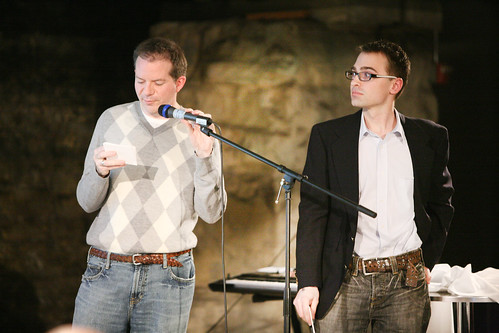
Saint Louis once opened its front door to the river. (1907 aerial view)
The importance of the river began to falter as the city was eclipsed by the rail capital of Chicago. The losing battle for dominance engendered desperation and bold proposals throughout the 20th century. While the clearance of 40 blocks of irreplaceable 19th century cast-iron architecture for the construction Gateway Arch and Jefferson National Expansion Monument was, in the end an even trade, many other decisions were shortsighted at the least.

The demolition of an intact 19th century riverfront in 1940 made way for the arch
Certainly, Saint Louis wasn't alone in undertaking such grand plans. What sets Saint Louis apart was the early date at which it started and the massive scale of operation. As an efficient labor force combined with federal incentives in the postwar period, demolitions for interstate corridors, slum clearance for industry, and the development of massive public housing projects eviscerated the city. By the 1980's over 800 blocks of urban fabric had been erased -- almost 11% of the total land area of the city. The mid-century desire to reinvent the city coincided with the implementation of the The Federal-Aid Highway Act of 1956. While interstates were originally conceived to skirt cities and connect to existing boulevard and parkway networks, powerful interests in the city demanded direct access to lure development. As David J. Masenten writes in his excellent thesis, optimism prevailed and "few thought these elevated expressways would have a serious detrimental effect on the cities they served." This was the case in downtown Saint Louis, where the effort to create a bold new connection between city and river was cut off by the construction of depressed and elevated lanes of Interstate 70.

Interstate 70 blockaded the front door of Saint Louis for half a century.
The existence of Interstate 70 prevented Dan Kiley's masterful landscape from becoming a vital part of Saint Louis. Furthermore, the alternating elevated and depressed lanes have stunted redevelopment on both sides of the highway.
While Saint Louis's front door has been closed for over 50 years, the next decade will be a once in a lifetime chance to reconnect city and river. Three events are converging to make reconsideration of this condition possible. First, The National Parks Service has updated their General Management Plan for the arch grounds. Secondly, the new Ronald Wilson Reagan Mississippi River Bridge will be the first new river crossing since 1967, and will provide a radical restructuring of the current highway network in both Saint Louis and Illinois. Finally, as part of the NPS GMP, an international design competition is underway to rethink the arch grounds and riverfront. This competition, consisting of globally recognized teams of architects, engineers, urban designers and historians will undoubtedly interject some bold new vision into an under-considered area.
As a number of designers and urbanists saw this confluence on the horizon, we formed an advocacy group we call City to River. We successfully lobbied the National Parks Service to issue the following statement in the GMP:
"The National Park Service would prefer and strongly supports the removal of the Interstate highway between Poplar Street Bridge and Eads Bridge at some point in the future. [emphasis added]
NPS JNEM Final General Management Plan p.5-15
We have been meeting with stakeholders ranging from MoDOT to local business associations since that time and have now substantiated our vision enough to present it to the public. We are calling for the removal of 1.3 miles of Interstate 70 to be removed from downtown Saint Louis and replaced with an urban boulevard. Beginning with a presentation at Pecha Kucha STL we have been bringing our vision to the broader community.

Paul Hohmann and I Present at Pecha Kucha STL. Image by Geoff Story.
In the past two weeks, we have been lucky enough to receive coverage from The Saint Louis Beacon, The Urbanophile, KMOV, and the St. Louis Post-Dispatch. Three days ago the Post-Dispatch editorial board formally endorsed the concept of highway removal.
In Part II of this article I will argue for the replacement of the downtown stretch of I-70 with an urban boulevard and explain the potential for highway removal.







0 reactions:
Post a Comment